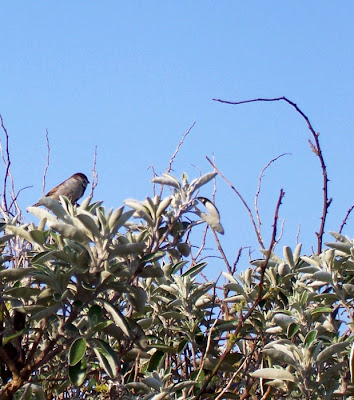The
King Arthur Hotel is a traditional country inn. Located in
Reynoldston, at the heart of the
Gower Peninsula, the hotel has a reputation for good, home-cooked food, and a wide choice of traditional ales. The hotel also provides accommodation, and an al fresco dining area.
The first thing that strikes you about the King Arthur, is its warm atmosphere, and friendly, courteous staff. The menu is varied and extensive, with an emphasis on locally sourced produce, such as locally-caught seafood, and local Welsh beef. There is also an extensive wine list, a children's menu, and a generous range of vegetarian options. All dishes are very reasonably priced, and it is possible to enjoy a three-course meal, with a couple of drinks, for around £20 per head.
Our starters arrived quite quickly after ordering. I sampled the cockles and laverbread, which arrived topped with bacon and melted cheese, served in a ramekin, with a side salad, sippets of bread, and a portion of Welsh butter. Laverbread, made from seaweed, is by its very nature, a little on the gritty side. However, the four main ingredients were combined in well balanced proportions, and proved such a flavoursome combination, that the tiny bit of grittiness did not detract from my enjoyment of the dish. In fact, I thoroughly recommend it.
The starter was surprisingly filling, so I was grateful for the slight delay before the arrival of the main course. I opted for traditional pub fare - a home-cooked lasagne, with chips and side salad. My food arrived well-presented, hot, and surprisingly tasty. The lasagne was cooked to perfection, with no hint of the dryness or overcooking which so often spoils restaurant lasagne. The meat sauce filling was generous, and of an ideal consistency, neither too runny, nor too dry. The cheese sauce topping was also just right - it complemented the pasta and the meat sauce, without dominating.
The King Arthur offers a generous dessert menu, ranging from traditional treacle sponge pudding with custard, to more sophisticated options, such as apricot and almond tart. Options also include locally-produced
Joe's ice cream, available in more than a dozen flavours. I opted for the Turkish delight flavour, which was delicious. My companions all ordered treacle pudding with custard. There was a fairly long delay between the ordering of the desserts, and them actually arriving at our table, but the convivial atmosphere and friendly service more than made up for the slight inconvenience.
Overall, I would thoroughly recommend the restaurant at the King Arthur Hotel. It makes for a relaxed and enjoyable dining experience. What more could you ask for than tasty food, served in a clean, cosy and welcoming traditional inn, by efficient and friendly staff?
The King Arthur Hotel, Higher Green, Reynoldston, Gower, Swansea, SA3 1AD. Tel. 01792 390775, email info@kingarthurhotel.co.uk.
Image by mr-numb via Flickr




